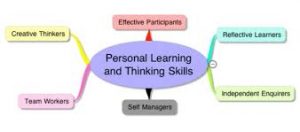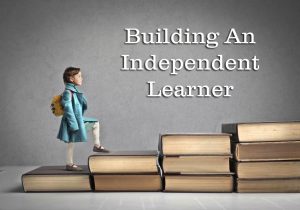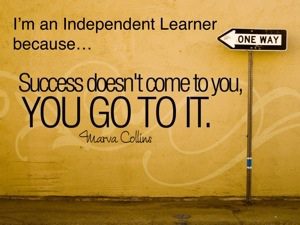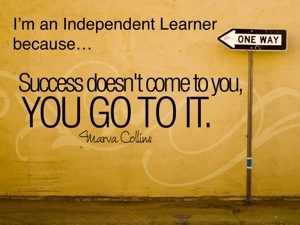When we send our children to school, we expect them to learn and to become independent learners. Not just learn Literacy and Maths or about the Battle of Waterloo, but also how to live in the world that they will soon join as adults. However, do not assume that life-skills are included as part of the standard school curriculum.

The government has tried to include these in the PLTS framework, which stands for Personal, Learning and Thinking Skills. PLTS includes the characteristics of being Team Workers, Effective Managers, Reflective Learners, Creative Thinkers and Independent Enquirers. But as much as it is important to teach these learning habits explicitly, the Catch-22 situation is that these are difficult skills to ‘teach’ especially when teachers are under pressure to teach to a specific exam board or Key Stage curriculum.
Creating independent learners with life-skills requires these aspects to be introduced and demonstrated throughout schooling and in every classroom, as much as possible. Having students guide their own learning, voice their thoughts and basically have an opinion and learn how to defend it, brings out the independent learner inherent in each. Mindless worksheets and regurgitating answers into a standardised test paper does not help develop this internal voice although sometimes this aspect of teaching to rule is required for certain aspects within certain subjects.
In our age of global competitiveness, soft-skills are as important as technical and academic skills. If you cannot manage your time working from various corners of the globe, are not as comfortable communicating with Shanghai as you are with Sheffield or cannot think out of the box to solve seemingly-impossible problems every day, you are unlikely to succeed in the new world of international inventiveness.
So, coming back to the original point, while we can teach our children about DNA sequences, can we also teach them to be independent learners and thinkers? This responsibility falls to parents as much as it does to teachers. In fact, if your child’s school is not promoting this kind of thinking, you can offset it by encouraging it at home. So how can we bring out children’s inherent ability to think independently?
One of the main ways to do this, in and out of the classroom, is to promote choice along with responsibility. “What would you like to do? (But remember you need to get X done before you can have fun).” This also helps children learn to manage their time, taking care of business before doing other things (this is also one of the hallmarks of high Emotional Intelligence, and can be a learned behaviour).
Another way to promote independence is to have an open and non-judgemental environment. It is difficult to express oneself without fear when you know you are going to get criticised or laughed at. Brainstorming is an excellent way to do this.
Reward initiative, but don’t lower your standards of expecting excellence. Look more closely at independent work than you would normally do, as students need specific feedback and guidance. Throwing them into the ‘deep end’ of independent, inquiry-based self-learning is lazy and can cause more harm than good. Involving students in their own learning goals and encouraging them to be reflective about themselves are also excellent ways to engage students in their own education and build life-skills that will be of use always.
For educators seeking to move towards a learner-driven environment, it might help to refer to theoretical models like the Learner Independence Continuum created by Dr. Rickabaugh. The former Director of the Institute for Personalised Learning has identified the aspects that lead from a teacher-driven classroom to a student-driven one. He states that each individual student is different and will need different levels of support and scaffolding – therefore, there is no ‘right place’ or having ‘arrived’ on the continuum.
This brings us to another aspect of creating independent learners – allowing students to learn at their own pace while stretching themselves to achieve the best they can within a given timeframe. We know that everyone has different strengths and intelligences. It is important to honour the fact that some students might be better at one thing than another. Being an independent learner means taking the time to master things, not just complete the syllabus to put a tick against something.
Mastering a few key concepts is necessary to building a structure that climbs high and lasts long. We have, in some ways, sacrificed depth for breath in education today. One of the main things I find myself teaching children in my tutoring school is fundamentals. It is amazing to me how shaky some children’s concepts are in Maths and English, even at KS4.

So don’t worry if your child is ‘slower’ at some things than in others. If they are great athletes, make sure they can read and write confidently. If they are great readers, make sure their Maths fundamentals are strong, etc. Once you are sure they are where they need to be, help them to spread their wings and fly – encouraging them to be socially, academically and emotionally independent. After all, that’s what the real world is all about.
